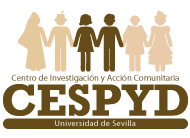Publicaciones
A Photovoice Project for Ethnic Health Justice: Reflections from Roma Communities in Seville, Spain
Reference: Miranda, D. E., Zhelyazkova, L. & Sladkova, J. (2021). A Photovoice Project for Ethnic Health Justice: Reflections from Roma Communities in Seville, Spain. Global Journal of Community Psychology Practice, 12(2), 1-17.
Abstract: Roma are Europe’s largest ethnic minority and despite their national citizen status, 80% live in extreme poverty and have a much worse health status than their non-Roma counterparts. European institutions have identified the institutional discrimination targeted at Roma communities—antigypsyism—as the underlying cause of the violation of their rights (European Union Agency for Fundamental Rights, 2018). Policies, practices and societal attitudes contribute to maintaining the status quo. From a community psychology perspective, we understand antigypsyism as institutional discrimination that needs to be addressed by creating processes with Roma communities that empower them to resist against this systemized oppression. Photovoice creates critical knowledge, increases individual skills to gain capacity to advocate and creates cohesion among oppressed groups to develop strategies for action (García-Ramírez et al., 2011). Thus, we propose that Photovoice can serve as a liberating process at the individual and community levels when utilized for advocacy. In this paper we present results of one aspect of RoAd4health (2016-2019), a project we carried out with Roma neighbors in Seville, Spain. The project aimed at developing advocacy processes in three at-risk, predominantly Roma neighborhoods to ensure the implementation and evaluation of Roma health policies through participatory action research (PAR). Here we focus on the potential of Photovoice to serve as a liberating process to resist antigypsyism. (Wang & Burris, 1997). In order to understand the individual and community impact of Photovoice for advocacy, we interviewed four of the Roma neighbor participants. Our analysis of the interviews resulted in two overarching themes from the citizen empowerment model (Kieffer, 1984): (1) From lack of consciousness to era of entry; (2) Achieving critical consciousness in the era of commitment; the second theme was divided into three subthemes, components of critical consciousness (Watts et al., 2011): (1) Critical reflection; (2) Political efficacy; and (3) Critical action. Overall, the Roma neighbors referred to the Photovoice as a method that instigated a conscientization process and helped gain commitment towards social justice actions, also reflected in actions following the Photovoice study. These results confirm that Photovoice as advocacy can contribute to individual empowerment and contribute to meaningful change towards community transformation to challenge antigypsyism.
Keywords: Roma, Health disparities, Photovoice, Narrative, Empowerment, Critical consciousness, Sociopolitical development, Community-based participatory action research, Advocacy.
Full text: https://www.gjcpp.org/en/article.php?issue=39&article=236.
